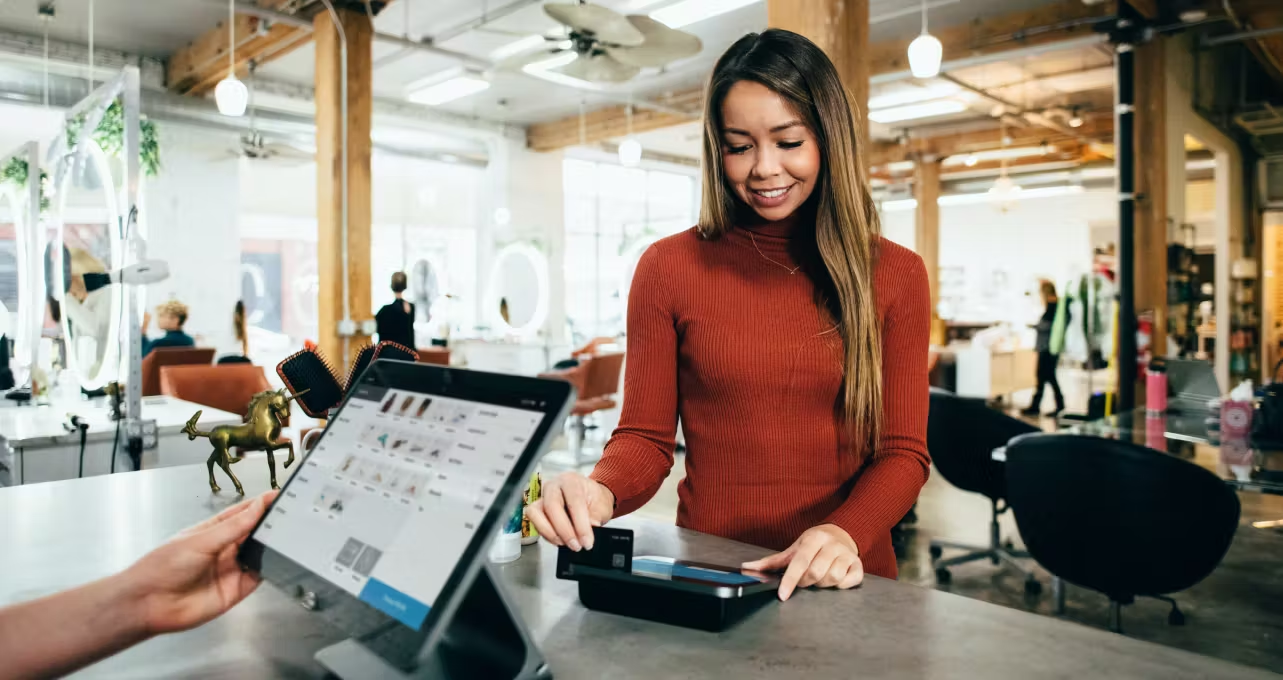How to Increase Your Market Basket Size: 10 Tactics from Verint


Increasing the average basket size of your customer base is high on the priority list for retailers right now. This is particularly true as US brands prepare to retail in a recession in late 2023.
Keep reading to learn more about what basket size actually is, how to measure it, and what key improvements you can make to increase your Average Basket Size.
What is basket size in retail?
By definition, basket size is the total amount of items a consumer buys in a single transaction.
Evidently, in retail, the larger the consumer’s basket size, the greater the increase to your revenue.
What is Average Basket Size?
The Average Basket Size (ABS) is the key metric by which retailers can track the typical numbers of items consumers buy in any given purchase.
Fortunately, there is an easy retail basket size formula you can use. To calculate your ABS, divide the overall number of items sold by the total number of transactions.
Average shopping cart size is an important metric because it gives brand leaders the insight they need to analyze checkout behavior and optimize their online and physical stores for conversion.
ABS shouldn’t be confused with Average Unit Retail (AUR), which refers to the average selling price of an item during a particular period.
How to increase basket size in retail
If you’re focusing your attention on increasing sales and average customer spend across your existing customer base, you’re not alone.
In 2021 a Gartner survey found that the majority (73%) of chief marketing officers say they will depend on current customers rather than developing new markets to foster growth.
Meanwhile, 39% said they will focus on their current market by increasing the sales of existing products.
Here are some of the most effective strategies retailers can use to increase basket size in their stores:
1. Promote personal shopping appointments
In an era of hyper-personalization, offering a personal shopping service is crucial to increasing your retail basket size. In the Next in Personalization Report, Mckinsey found that 71% of consumers expect brands to offer personalized experiences. One-on-one services are key to building relationships with customers and increasing upselling opportunities.
Many retailers from all different sectors are rolling out personal shopping, styling and beauty services in their stores. Others are offering technical advice and support or product consultations.
Speaking about the important of personal shopping appointments, Chief Industry Analyst Marshal Cohen, told Business of Fashion:
“Imagine a person going into a store to buy a new skirt; personal shopping can turn that skirt into an outfit.”
Don’t forget to make your personal shopping services easily accessible for customers and easy to monitor for store managers using an Appointment Booking Software.
2. Offer discount sales
Discounts are key to attracting customers into stores and increasing retail basket size.
According to a study by Software Advice, discounting is the top “pricing strategy for retailers across all sectors, used by 97% of survey respondents.”
Unfortunately, discounts are also Marmite of the retail world – some brands love them while others despise them.
It’s true that discounts can set a bad precedent. If one customer paid $50 for a product, they may be upset when they speak to a friend who bought the same product during a sale for half the price.
Discounts are a great way to boost your basket size, although it’s important to weigh the pros and cons before deciding if they’re right for your business.
3. Push your loyalty program
Another proven way to increase basket size is through loyalty programs. While many of the founding principles of loyalty programs have become outdated and redundant, they offer endless personalization opportunities.
Many brands are increasing average customer spend with personalized offers based on consumer data. Others are taking it a step further with products or services that are exclusive to loyal customers.
Interestingly, there’s evidence that paid loyalty programs are more effective at raising basket size than free ones. This is likely because customers who are on a paid subscription have an incentive to make sure their investment is worth the cost. As such, they’re more likely to buy products than those on free programs to take advantage of their subscription.
4. Keep stock updated
It may be obvious that customers can’t buy something if it’s not there – but it’s so important it bears repeating. Retailers need to do everything within their power to regularly update their inventory.
One unique tactic that a number of retailers are implementing is adopting a crowdsourcing approach towards stocking issues. Customers browsing your stores can take photos of your shelves when an item is missing or the shelves are in a sorry state and send them in to your head office. This keeps your head office informed about what’s taking place on the shop floor. It’s also a smart way to capture customer information so that you can engage with them once products come back into stock and to increase customer satisfaction rates.
5. Optimize your store layout
Another worthwhile initiative that can have a positive impact on your average customer spend rate is optimizing your store layout.
For instance, 90% of US shoppers turn to the right when they walk into a store, and tend to move counterclockwise through the store. This means your displays to the right of the front entrance need to make a bold statement. It’s smart to display your high-margin goods here to increase revenue.
In addition, test out different store layouts to find the best basket-size boosting combinations. Consider the famous example of a grocery retailer displaying beers near their baby products. Parents who venture in-store specifically for extra diapers were far more likely to add a crate of beer to their shopping cart.
Above all, it’s important to adopt a minimalistic approach when creating your aisles. Keep them wide for retail accessibility, uncluttered and easy to navigate so that your customers can move seamlessly around your store. Advertise additional services such as personal shopping or BOPIS at or near your checkout. Make it possible for customers to request assistance from your store associates using their mobile phones or through in-store kiosks.
6. Offer a curbside pickup or BOPIS service
BOPIS services have long been proven to increase basket size. Customers come into your store to pick up an item they’ve bought online. However, while they’re waiting in a virtual queue for their item to be prepared, they end up wandering around your store and buying something else.
In comparison, curbside pickup might seem counterintuitive. After all, your curbside customers never actually enter your stores.
Nevertheless, curbside pickup is beneficial for building customer relationships. If you can prove to customers that your service is consistently easy, efficient and reliable, then they’ll be significantly more likely to return to your store.
7. Create a frictionless checkout process
Cashierless checkout is a growing trend and has the ability to save customers time while optimizing retailer’s resources. Amazon Go stores are perhaps the most well-known example, while other big retailers like Walmart and Target are also experimenting with the technology.
As popular as this trend is becoming, the key takeaway here is that retailers need to make their checkout process as simple and frictionless as possible.
Eliminating the need for customers to join long lines to pay for items or to receive service is crucial to increasing basket size and building long-lasting relationships.
It’s also a good idea to set up a number of payment options. Installment payments firm Afterpay reported a 30% increase in average basket size for U.S. customers year-on-year during the 2021 holiday season.
For more information on automated checkout, check out Verint’s report on the Business Case for Digital Store Transformation.
8. Bundle products together
Another way to increase personal basket size is by bundling complementary items together. For example, you might offer a yoga kit that includes a mat, pants and a water bottle. This approach works because customers are drawn to bundles regardless of the cost-saving benefits.
Grouping items that are commonly purchased together or complement each other saves your customers time and gives them a sense of confidence. This approach is particularly effective for customers wanting to buy gifts and is a must-have throughout the festive season.
9. Train your store associates to upsell
Another important initiative is to train your store associates to make product suggestions to customers. Make sure these suggestions are genuine – your store associates should try to make suggestions like a friend would, rather than a salesperson.
10. Think omnichannel
Finally, when it comes to increasing retail basket size, stop separating online and in-store. Focus on applying the same personalized shopping experiences that customers get online into their store environments. Bring the same helpful, service-orientated approach to your online offerings. Make sure to measure ABS and average transaction value (ATV) across multiple channels to get a better understanding of your customer spend.
Increasing basket size with Verint
For more information on how Verint’s Appointment Booking and Virtual Queue Management software can drive basket size in your stores, request a demo.